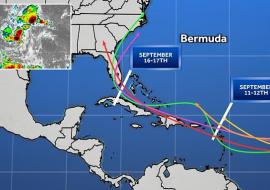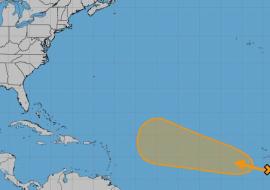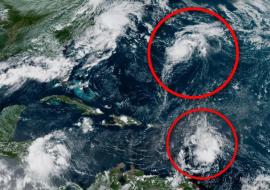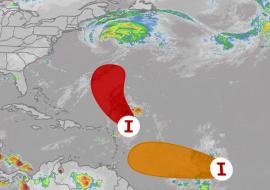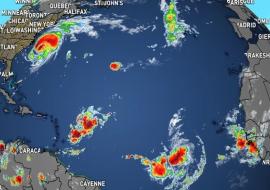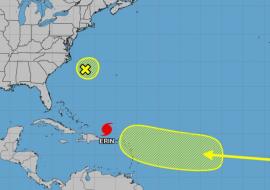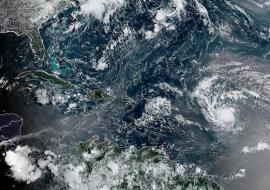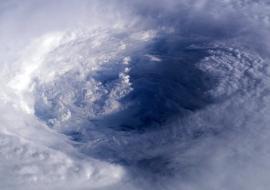Hurricane Florence’s Outer Bands Start Pounding North Carolina
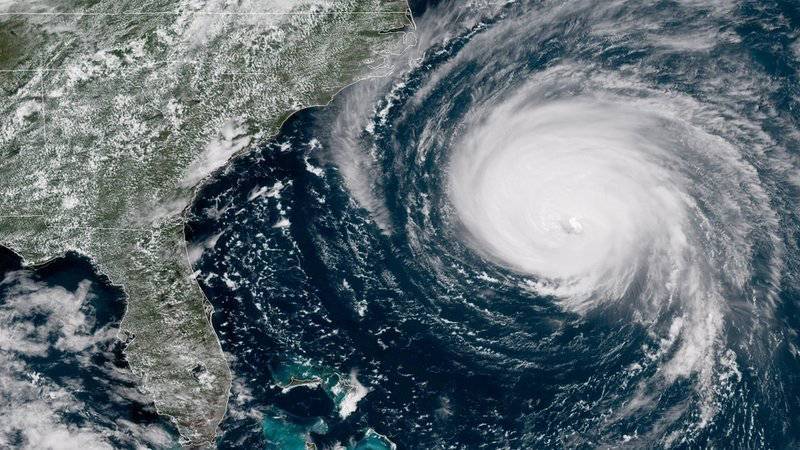
The outer bands of wind and rain from Hurricane Florence began lashing North Carolina on Thursday as the monster storm moved in for an extended stay along the Southeastern coast, promising to drench the properties of 10 million people with immense amounts of water.
Florence's top sustained wind speeds dropped from a high of 140 mph (225 kph) to 110 mph (175 kph) as its outer rain bands approached the North Carolina coast early Thursday, reducing the storm from Category 4 to Category 2, but forecasters warned that the enormous wind field has been growing larger, raising the risk of the ocean surging on to land.
As of 8 a.m. EDT it was centered about 170 miles (275 kilometers) east-southeast of Wilmington, North Carolina and about 220 miles (355 kilometers) east-southeast of Myrtle Beach, South Carolina, moving northwest at 12 mph (20 kph). Florence's hurricane-force winds were blowing 80 miles (130 kilometers) from its center, and tropical-storm-force winds reached up to 195 miles (315 kilometers) from the eye.
The National Hurricane Center's best guess was that Florence's eye would blow ashore as early as Friday afternoon around the North Carolina-South Carolina line. Then, it will likely hover along the coast Saturday, pushing up to 13 feet (nearly 4 meters) of storm surge and dumping 20 to 30 inches (50 to 75 centimeters) of rain on both states, before slogging over the Appalachian Mountains.
The result: catastrophic inland flooding that could swamp homes, businesses, farm fields and industrial sites.
About 5.25 million people live in areas under hurricane warnings or watches, and 4.9 million more live in places covered by tropical storm warnings or watches, the National Weather Service said.
Weather Underground meteorology director Jeff Masters said Florence eventually could strike as a Category 1 with winds less than 100 mph (160 kph), but that's still enough to cause at least $1 billion in damage. Water kills more people in hurricanes than wind, and the rain and storm surge will make Florence extremely dangerous.
It is unclear exactly how many people fled, but more than 1.7 million people in the Carolinas and Virginia were warned to clear out. Airlines canceled nearly 1,000 flights and counting. Home Depot and Lowe's activated emergency response centers to get generators, trash bags and bottled water to stores before and after the storm. The two hardware chains said they sent in a total of around 1,100 trucks.







